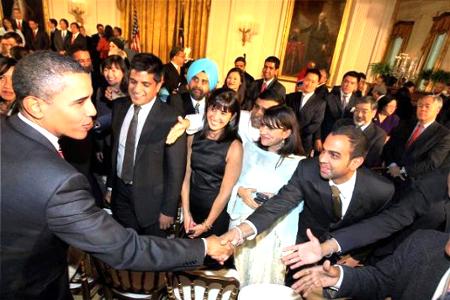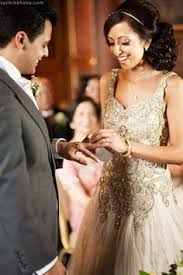 एक फ़्रांस के नागरिक का यह प्रश्न अटपटा लग सकता है पर जो लोग लेखक को जानते हैं वह यह भी जानते हैं की इनके विचार भारत के लिए कितने शुभ हैं . वास्तव मैं हममें जो लोग विदेशों मैं कई दिन बिता के लौटे हैं वह यह बिना झिझक कह सकते हैं की हम पश्चिम मैं जा के एक गुप्त हीन भावना से ग्रस्त से हो जाते हैं . प्रीत भरा का देवयानी प्रकरण मैं शर्मनाक व्यवहार ही रहा. यहूदी ऐसा नशीं करते . चीनी चीन के प्रति ज्यादा श्रद्धावान होते हैं .इस लिए एक विदेशी का यह प्रश्न पूछना जो हम सभी को कचोटता है सर्वथा उचित है .
एक फ़्रांस के नागरिक का यह प्रश्न अटपटा लग सकता है पर जो लोग लेखक को जानते हैं वह यह भी जानते हैं की इनके विचार भारत के लिए कितने शुभ हैं . वास्तव मैं हममें जो लोग विदेशों मैं कई दिन बिता के लौटे हैं वह यह बिना झिझक कह सकते हैं की हम पश्चिम मैं जा के एक गुप्त हीन भावना से ग्रस्त से हो जाते हैं . प्रीत भरा का देवयानी प्रकरण मैं शर्मनाक व्यवहार ही रहा. यहूदी ऐसा नशीं करते . चीनी चीन के प्रति ज्यादा श्रद्धावान होते हैं .इस लिए एक विदेशी का यह प्रश्न पूछना जो हम सभी को कचोटता है सर्वथा उचित है .
हमारा घर मैं खाना तो भारतीय रहता है , पूजा पाठ भी दो या तीन पीढ़ियों तक चलता है पर बाद मैं सब अमरीकन हो जाता है . इसके विपरीत जो भारतीय अफ्रीका मैं जा बसे हैं विशेषतः गुजराती वह आज भी जोर शोर से नाग पंचमी जैसे त्यौहार मानते हैं मनो समय वहां ठहर सा गया है. इस विरोधभास का कारण शायद यह है की अफ्रीका मैं वह अपने को हीन बिलकुल नहीं मानता जबकि पश्चिम मैं हम कुछ अनकही हीन भावना से ग्रस्त हो जाते हैं . फिर दूसरी समस्या है की जहाँ तीन केरल के लोग हों वह मलयाली क्लब बना लेते हैं , बंगाली बंगाली क्लब बना लेता है . तमिल अपना क्लब बना लेता है . अँगरेज़ भारतीय कौन हैं उसे ढूंढता फिरता है .एक और समस्या गंदगी की है . चाइना टाउन एक टूरिस्ट जगह बन जाती है और सिंगापूर का लिटिल इंडिया या साउथ हॉल करोल बाग़ बन जाते हैं .
It’s lunchtime at the home of the Consul General of India in New York, Dnyaneshwar M. Mulay.
A young Hindu American arrives. Her name is Suchitra Vijayan and she teaches part time in Columbia University, one of the most prestigious in the USA & plans to start there a course on South Asian Human Rights.
She says that she is first going to travel to India to interview Kashmiri Muslims and Christian Nagas – obviously an anti Indian agenda -while her Indian consular mentor smiles proudly…
Welcome to America, the home of millions of Indians, some of whom make a living out of bashing India in American universities and in US publications.
Let’s face it: Indians who emigrate to America most of the time merge totally into the American way of life and their children never come back to their homeland.
The culprit, of course, is Indian education that mass produces brilliant Indians, who are only good for export, because students are not taught to be proud of their own culture, the way French are proud to be French or the Americans proud to be Americans.
As a result, Indian Americans know nothing about Kalidasa, probably one of the greatest poets ever, or Shivaji Maharaj, who is on par with Napoleon, or Sri Aurobindo, India’s greatest contemporary philosopher – but all about Shakespeare, the latest Dan Brown novel, or the best Italian restaurant in New York.
This is the greatest brain drain in the world, which allowed the Silicon Valley to flourish (80% Indian engineers), or the American medical system to expand (60% Indians).
Compare this to the American Chinese: Not only do they unabashedly stand out as Chinese, but they repatriate many of their funds to China and even go back to the mainland, to be part of the great Chinese economic boom.
American Indians rave about the American way of life, but it burns out a human being in 30 or 40 years. They start early for work – by 7 am, America’s millions of highways are already clogged with traffic.
There is fierce competitiveness in the work place – you can be fired in a minute for no reason. Imagine the late hours and heartburn produced over the years by food too quickly swallowed on the run or in the car, the immense stress at airports where security – thanks to continuing terrorism – has reached inhuman proportions…
If only American Indians did retain a bit of their Indian-ness…
Today’s Hollywood stars all do yoga, India’s gift to the world. Yet not only it is not taught in Indian schools and universities as it should, but our Hindu Americans do not practice it.
What else? Pranayama is the ancient Indian science of breathing. Through it you can not only gain more energy, but also de-stress naturally and balance your mind.
It is also a perfectly secular science: Respiration has no religion and a Muslim, a Hindu or a Christian breathe the same air.
In fact, Sri Sri Ravi Shankar, who has revived and modernised pranayama, has many Muslims and Christians teachers and disciples. Yet, neither is it taught in India, nor do our Indian Americans seem to practice it much.
What about meditation, this most ancient technique that has again no religion, and can be practiced by anybody, with wonderful effects on the mind and the body?
In fact, American companies have begun introducing meditation in their seminars and it is becoming mainstream in the US. Does that mean that meditation is taught in Indian schools, as it should be, or that our Indian Americans practice it? Not at all.
What about Ayurveda, the oldest medical science still in practice that understood 3000 years before western medicine, that many diseases have a psychosomatic origin? Do our Hindu Americans use Ayurveda? Unlikely.
Yet, what would happen if Indian Americans practiced a little bit of that Indian-ness? They would shine, be an example to their fellow Americans, and make India proud.
Instead they want to become more American than the Americans. In this process, they drop their unique identity and are a loss not only to India, but also to America, as they bring nothing new to American culture.
And because they do not stand out, they allow these multiple South Asian groups that sprout everywhere, to be dominated by hostile Indian Americans, who, for instance, convinced the US Government for ten years to deny Narendra Modi a visa.
At the same time, it is true that America, whatever its faults, has always stood up for freedom and democracy. It did so during World War II, when it saved Europe from Nazi domination. It is doing so today, by being the only country in the world willing to take on terrorism head on.
Americans are friendly, hard working, and it should soon dawn upon them that India is their natural political ally, in an Asia confronted with terrorism born out of Pakistan, Afghanistan or Indonesia.
It is also the obvious democratic, pro western and liberal economic destination to counterbalance China’s aggressive hegemony in Asia.
Meanwhile, it is very unfortunate that the second highest Indian official in the USA, endorses and promotes anti-Indian agendas, whereas he should be the first one to hunt them out. This Nehruvian mind-set in diplomats has got to stop.
The author is the editor in chief of the Paris based La Revue de l’Inde.
You can visit his personal site here and read his blog here.
